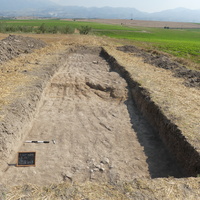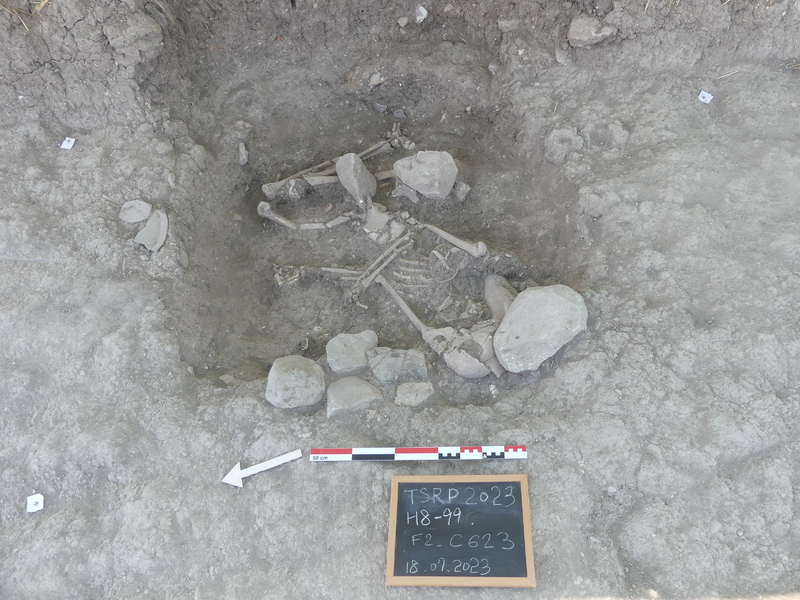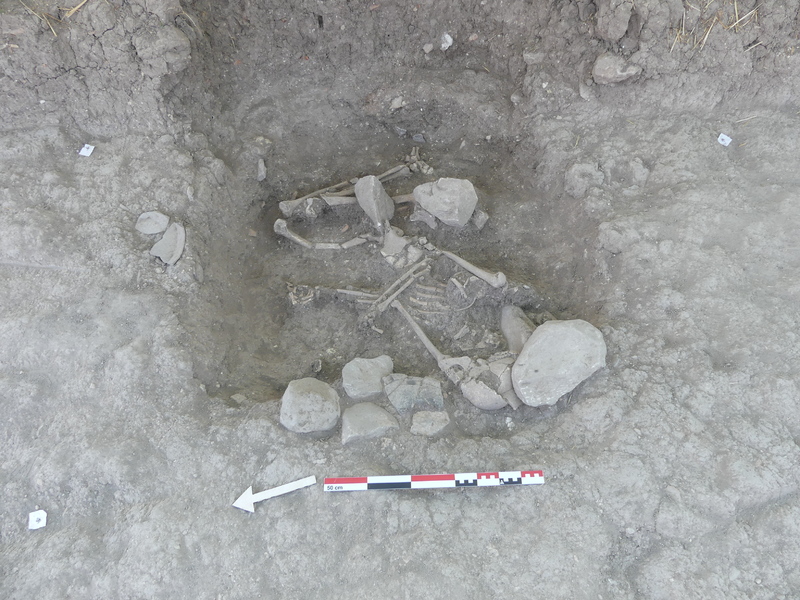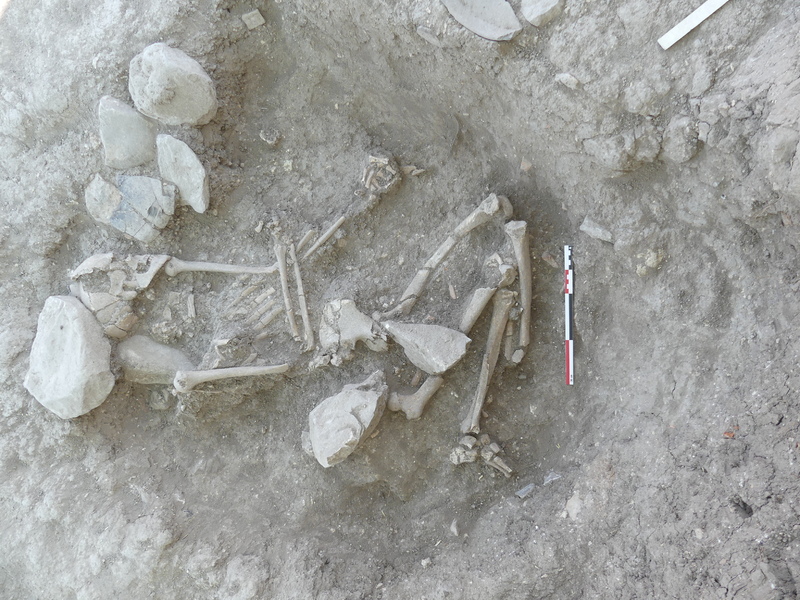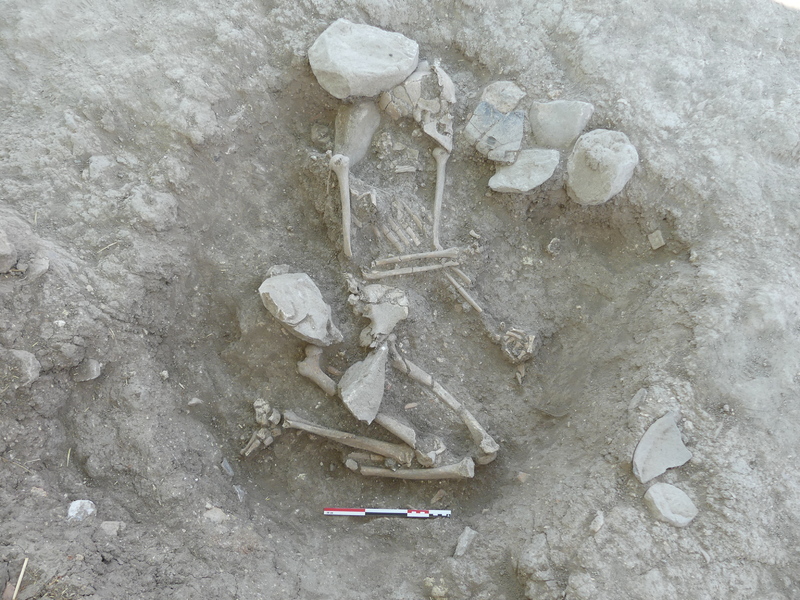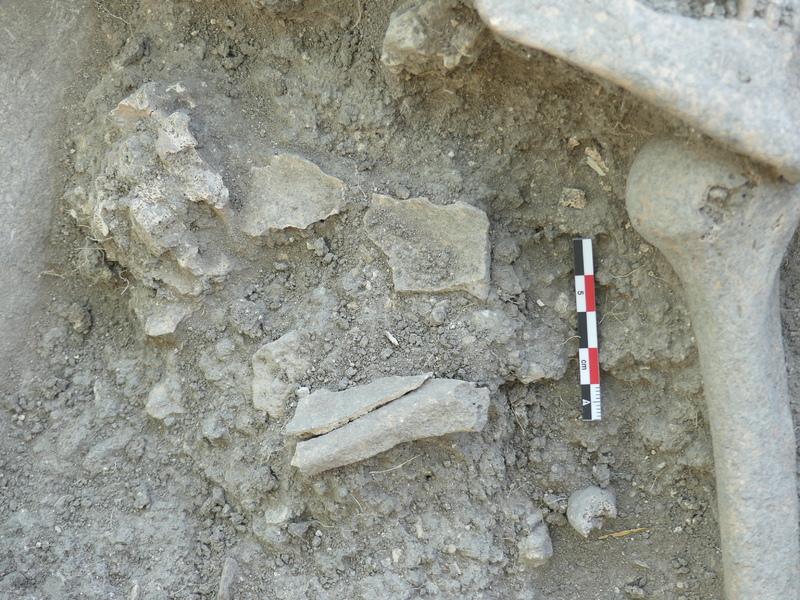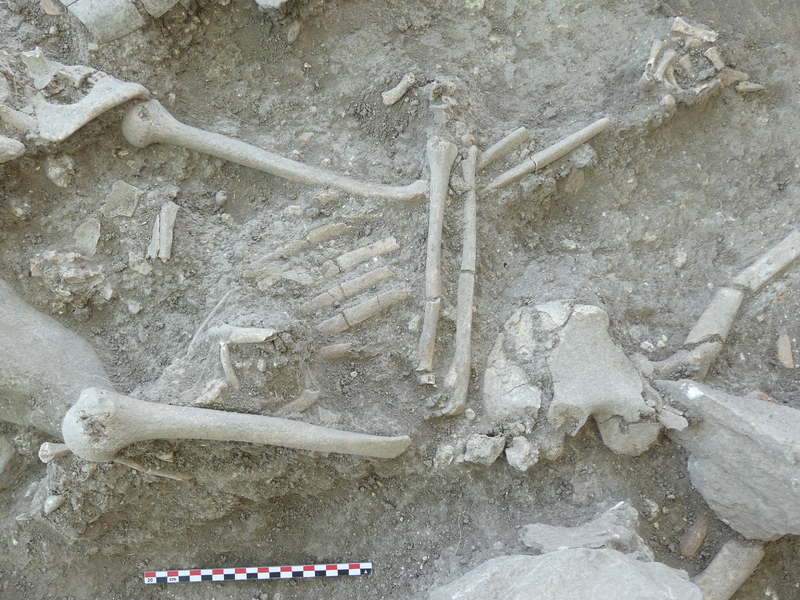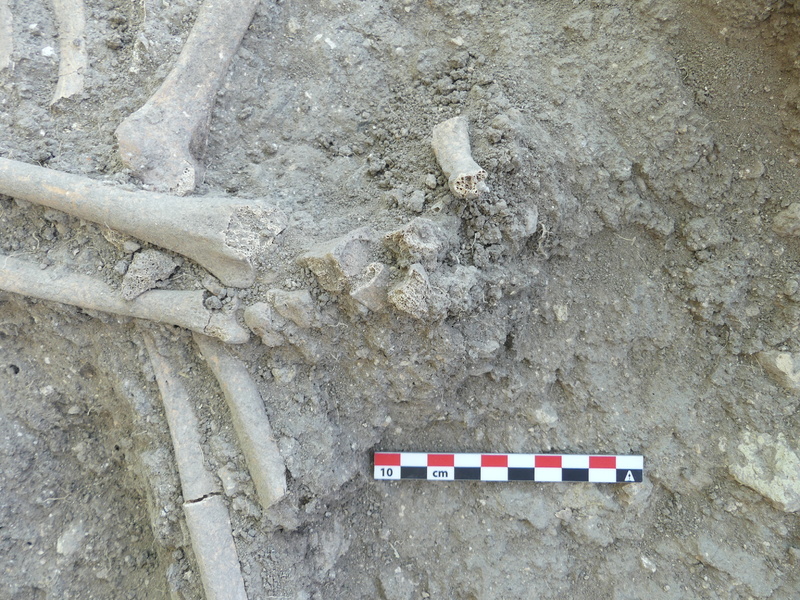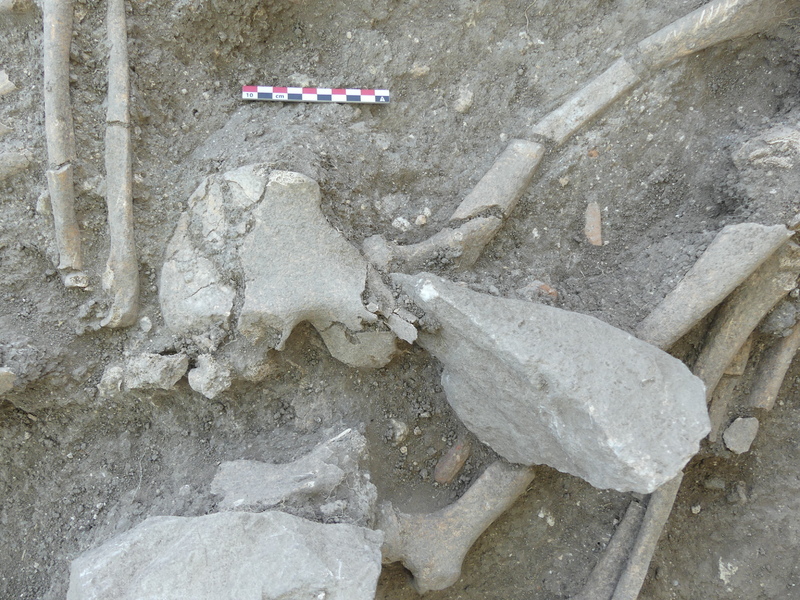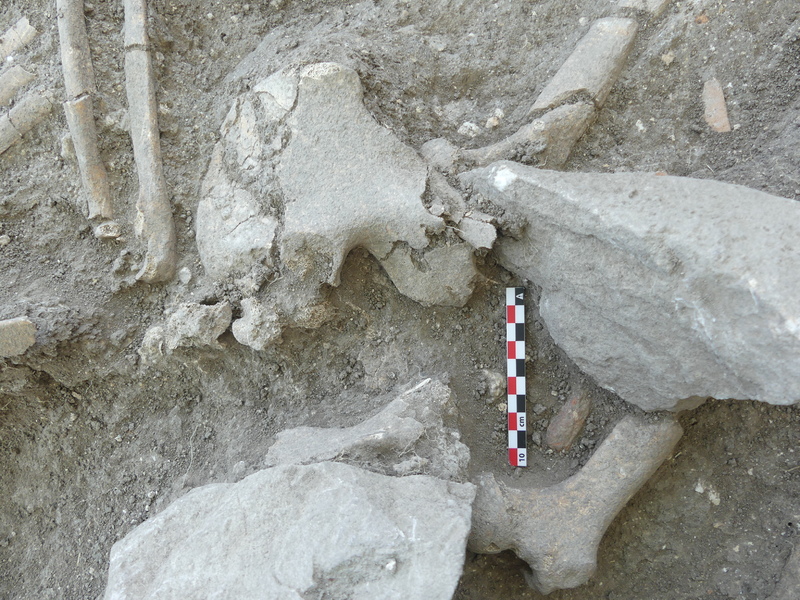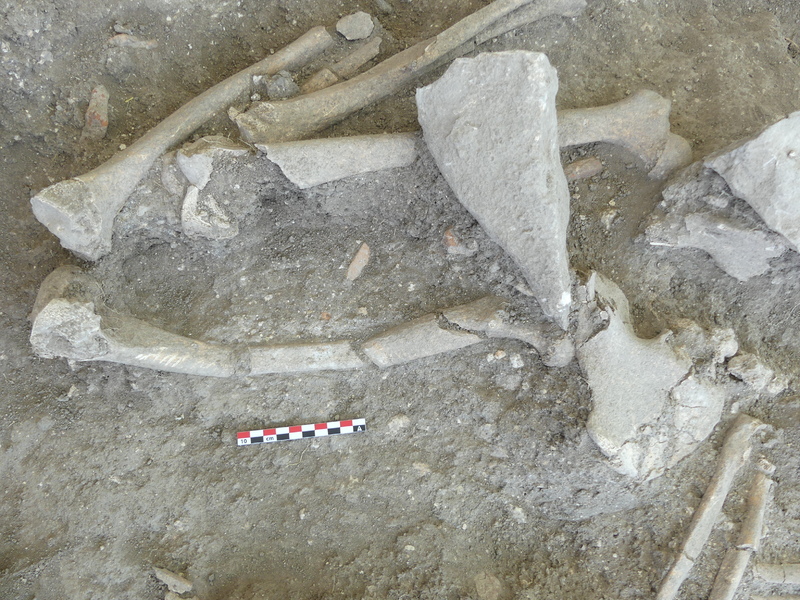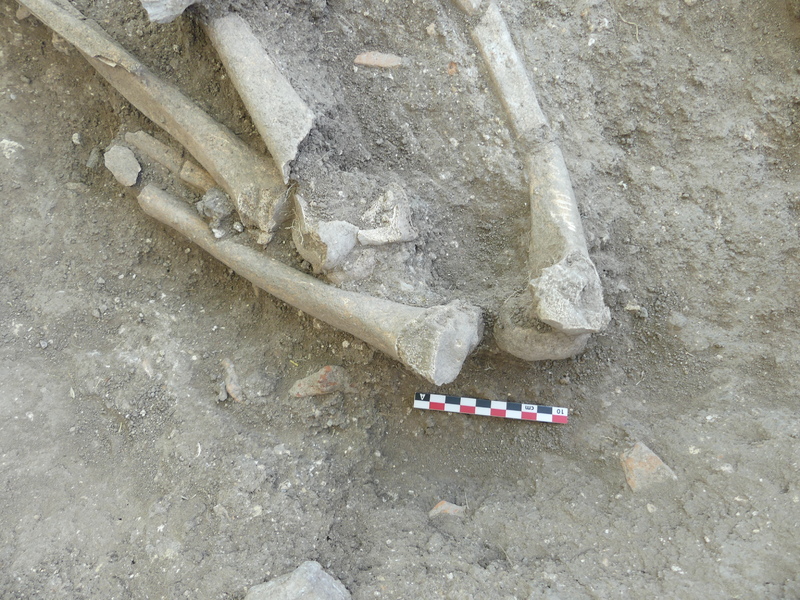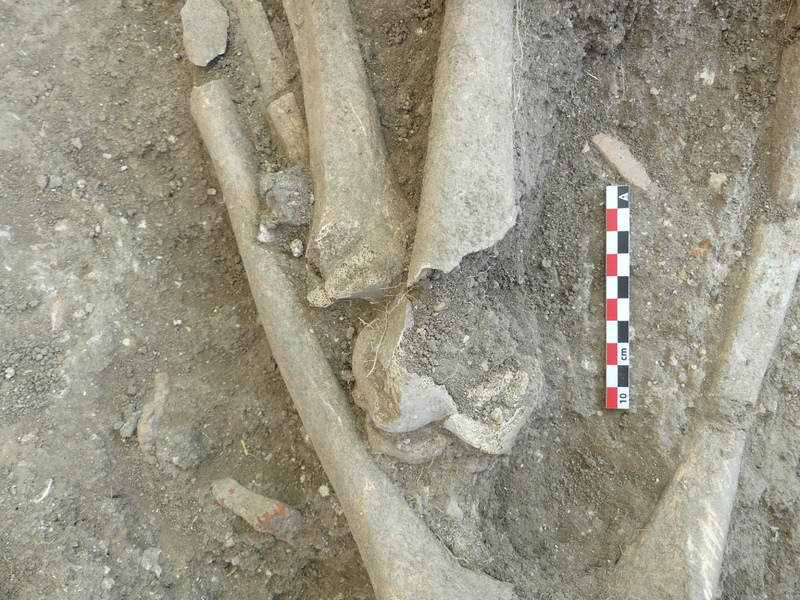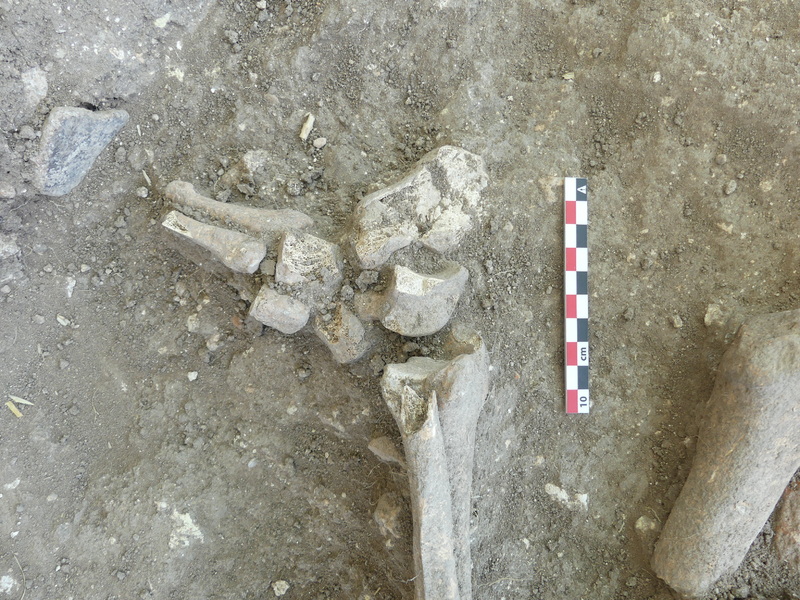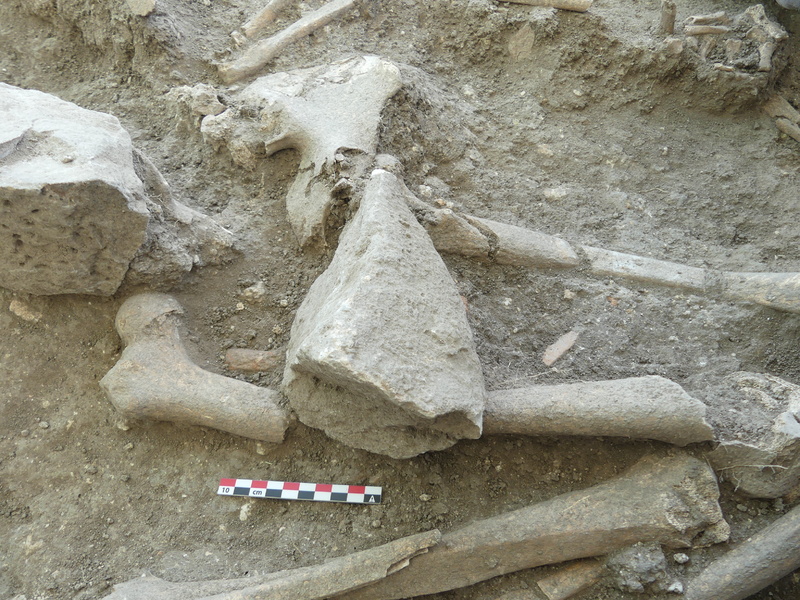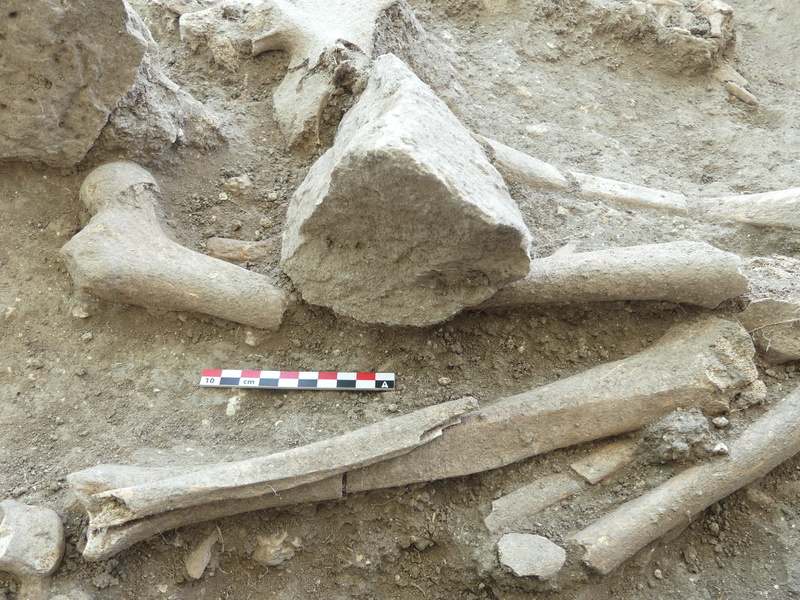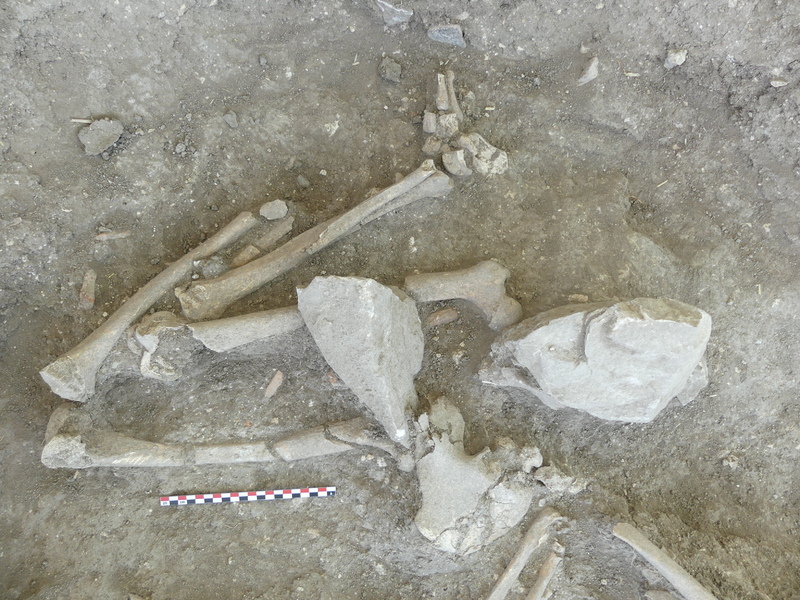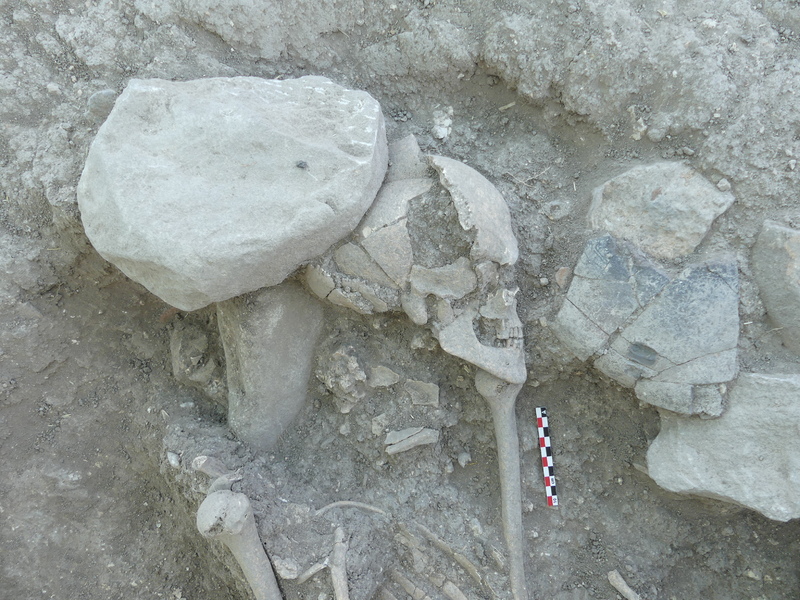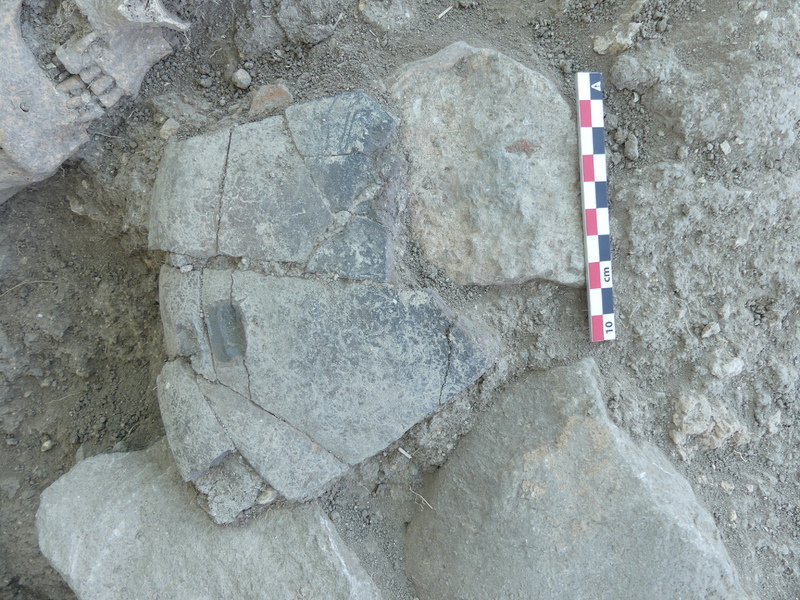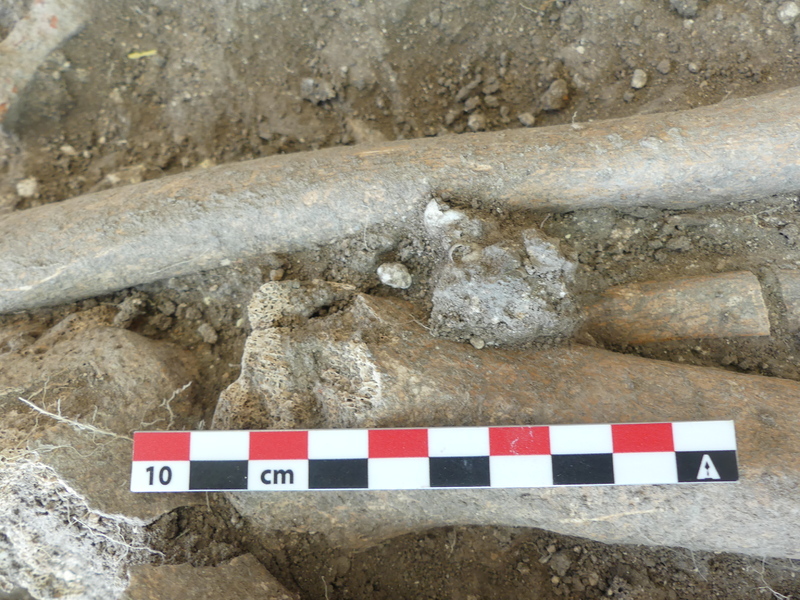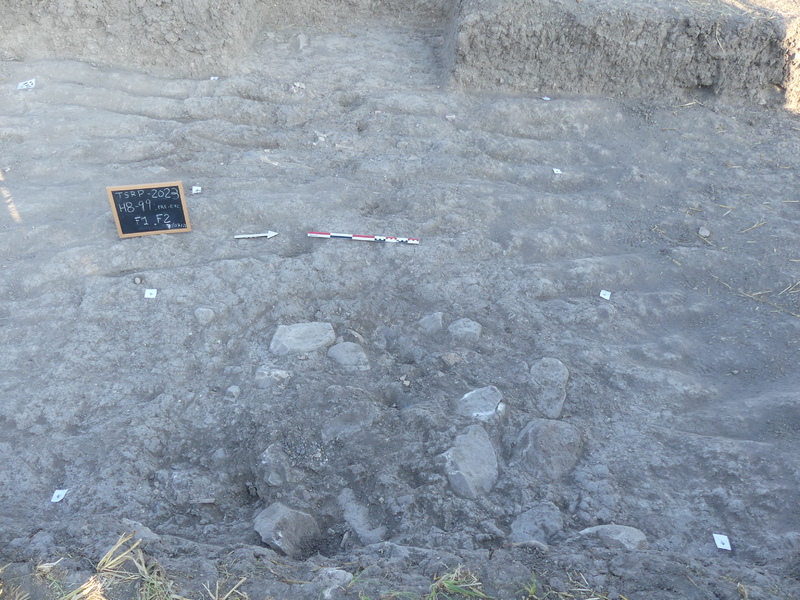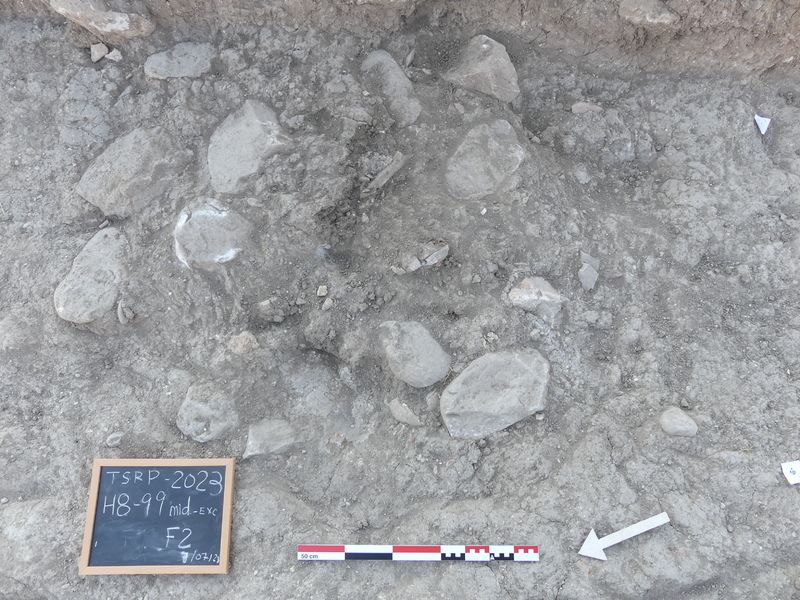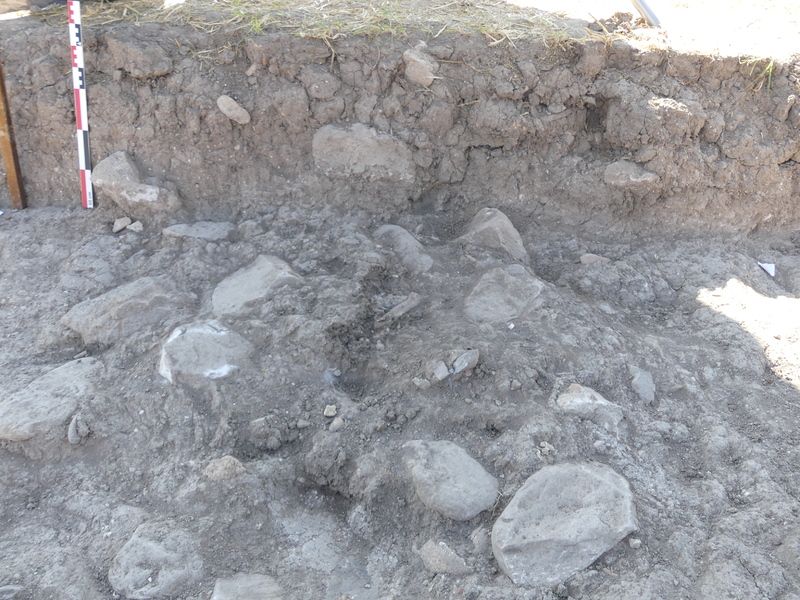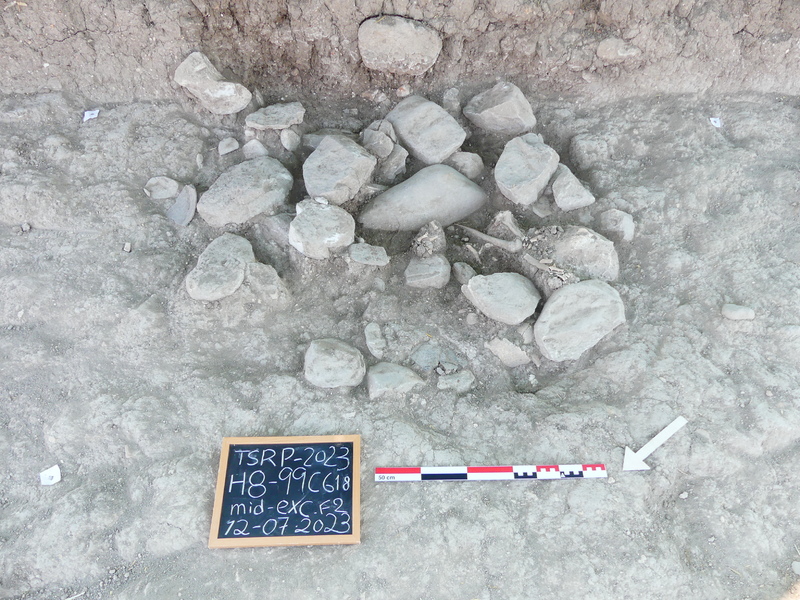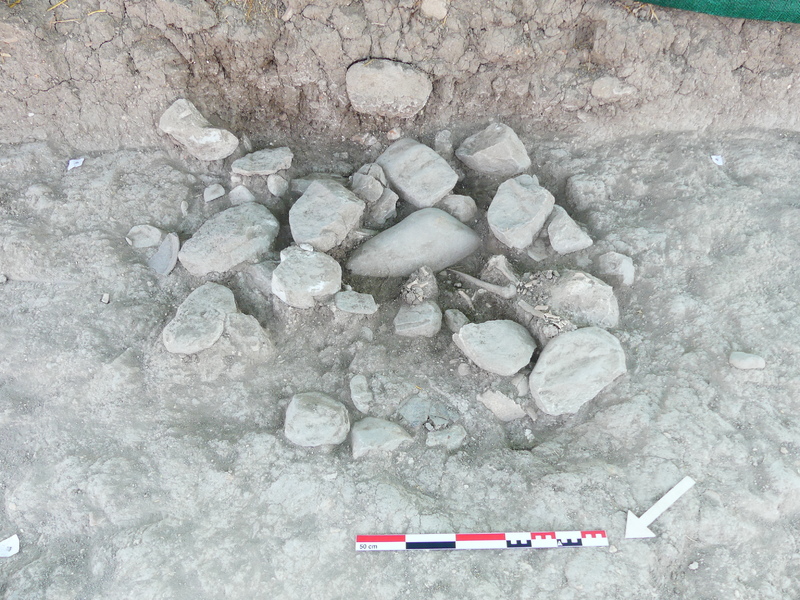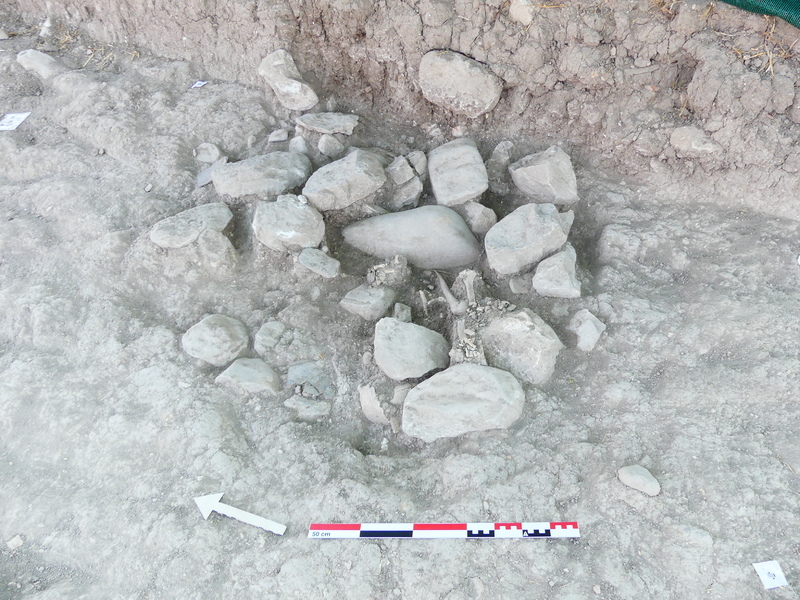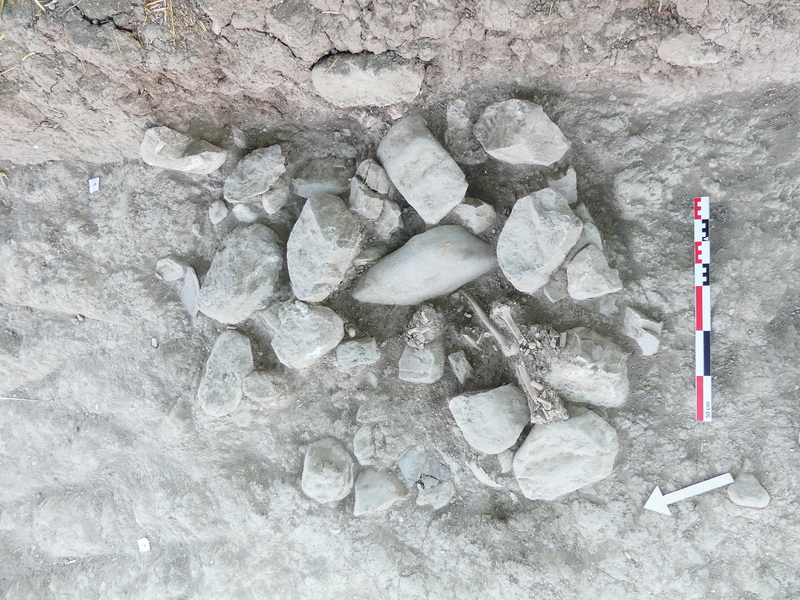The Feature 2 corresponds to a single primary inhumation in pit covered by a heap of stones and soil, oriented west-east, located outside of the settlement wall (c601) at 0.90 m east to the burial F1. Identified at 0.35 m depth from the surface of the top soil (c600), it has been much less truncated by ploughings than the burial F1. Indeed, these remains lie on the edge of the cultivated field, under a space used some times as a country small lane.
For the individual c603, an oval pit (c607), measuring 1.40 m x 1.20 m with gentle steps on the western and eastern sides was dug into the layer c605, the upper preserved layer known so far in this part of the trench. The individual (c623), oriented west-east, the head to the west, was in flexed position on its left side facing north, the left arm along the body and the right arm over the area of the stomach in a natural position. Despite the bioturbations, its skeleton is well preserved. Its head had been framed by two stones (c637) on each side. On the northern one was found the large fragment of pottery (c624), which can be clearly associated with the deceased. Under the skeleton (c623) has been observed a thick layer of loose soil (c635). Then, it is not excluded that the body was initially lying on some specific organic element. However, further analysis need to be done. The skeleton was found covered with soil (c619), that could have been the result of infiltration and above by a cover made of stones (c614, c618) and soil (c629). The position of the stones, fallen into the grave (c626), breaking the bones, suggest that the grave had an empty space, maybe close initially by a light organic cover above which were placed the stones. This hypothesis need confirmation. On some stones of the cover and on the soil between the stones, have been found two deposits of burnt and unburnt bones (c608, c617). Even if the identification of the bones need to be done, it is possible to say that they were not burnt in situ but brought from elsewhere and placed on or between the element of the cairn. It can be interpreted as intentional deposits, probably, offerings. Two other bone deposits (c621, c622) are less clear, and it is possible that they are the result of bioturbation more than intentional deposits. The whole grave was covered with a fine layer of soil (c609), at the interface of the top soil (c600).
In the grave, apart from the pottery sherd found near the head (c624), no find could clearly be associated with the individual as personal items. Nonetheless, a flint and seven shells have been found around the area of the jaw, the neck and the right shoulder (619 #finds). Then, we cannot exclude the possibility that they were part of an ornament.
Indeed, the burial has suffered from bioturbations, especially animals burrows which may have crossed the skeleton from neck to toes - almost a whole foot is missing. Nonetheless, there is no doubt that the anthropological/osteological analysis of the well preserved skeleton will bring more light on this burial.





